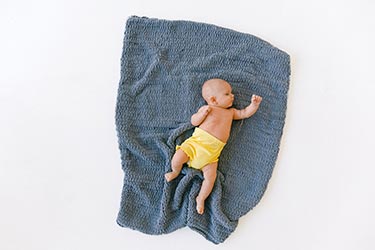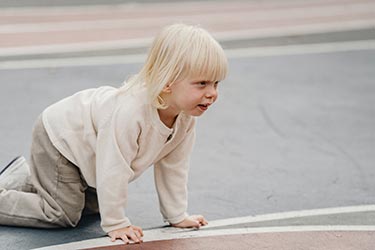Primitive Reflex Series: ATNR Presentation in Schools

Entering the pediatric therapy world, there’s a load of medical jargon that can feel overwhelming at times. Many therapists talk about how reflexes affect daily participation in school and extracurricular activities. Here is a quick and easy breakdown of asymmetrical tonic neck reflex (ATNR)!
What are primitive reflexes?
There are many different types primitive reflexes! They function as survival mechanisms for infants and young children. For example, the suckle reflex starts in infancy in order to support breathing and swallowing.
Typically, reflexes emerge either in the womb during pregnancy or in the early few months of life. They will start to integrate (or incorporate into) a child’s daily functioning and routines. However, if they do not integrate at specific points in development, then they may hinder a child’s participation in daily activities.
What is Asymmetrical Tonic Neck Reflex (ATNR)?
Asymmetrical tonic neck reflex (ATNR) is nicknamed the “fencer pose” reflex. This reflex begins between 18-months in utero and 2 months. It integrates around 6 months of age.
In infants, this reflex is tested by placing a child on their back and turning their head to either side. The child’s arm and legs will extend on the side their head is turned and flex on the opposite side.
In young children, this reflex can be tested on all fours while rotating their head to either side. Again, the child’s arms and legs will extend on the side their head is turned to. On the opposite side, their arms and legs will flex.
Signs/Symptoms
- Poor bilateral coordination
- Poor scissor use
- Poor handwriting
- Poor seated postural control
- Poor attention and focus
- Poor coordinated eye movements required for reading/writing
- Difficulty crossing midline
- Difficulty coordinating upper and lower body
- Gait impairment
Activities
There are a variety of exercises and activities that can help to integrate ATNR. Consult your occupational therapist for a list of strategies. Several activities include:
- Animal crawls
- Cat/cow yoga poses
- Snow angels
- Hallway air hockey
- Upside down ball pass/ball rolling
Importance
By consulting your occupational therapist, you can find targeted strategies and exercises to best integrate the ATNR reflex. This will help support your child in their growth and development. It will help to improve their independence in reading, writing, and with gross motor games!

Eyas Landing is a therapy clinic with a mission to provide evidence-based and family-centered therapy services for children, adolescents, and their families. The primary goal is to deliver relationship-based interventions within the most natural environments and to empower families to reach their full potential. To achieve this goal, our highly educated, compassionate staff dedicates time and expertise to create experiences that maximize therapeutic outcomes. The strength, determination, and perseverance of our clients are evident as they succeed in therapy, and ultimately in their daily lives.
Eyas Landing offers a wide range of comprehensive services including Speech Therapy, Occupational Therapy, Physical Therapy, ABA Therapy, Social Work, Family Therapy, and Neuropsych testing. Services are provided throughout the Chicagoland area via Telehealth, In-Home, and in our state of the art clinic.
Want to learn more or you have a specific question? Feel free to connect with us here!



